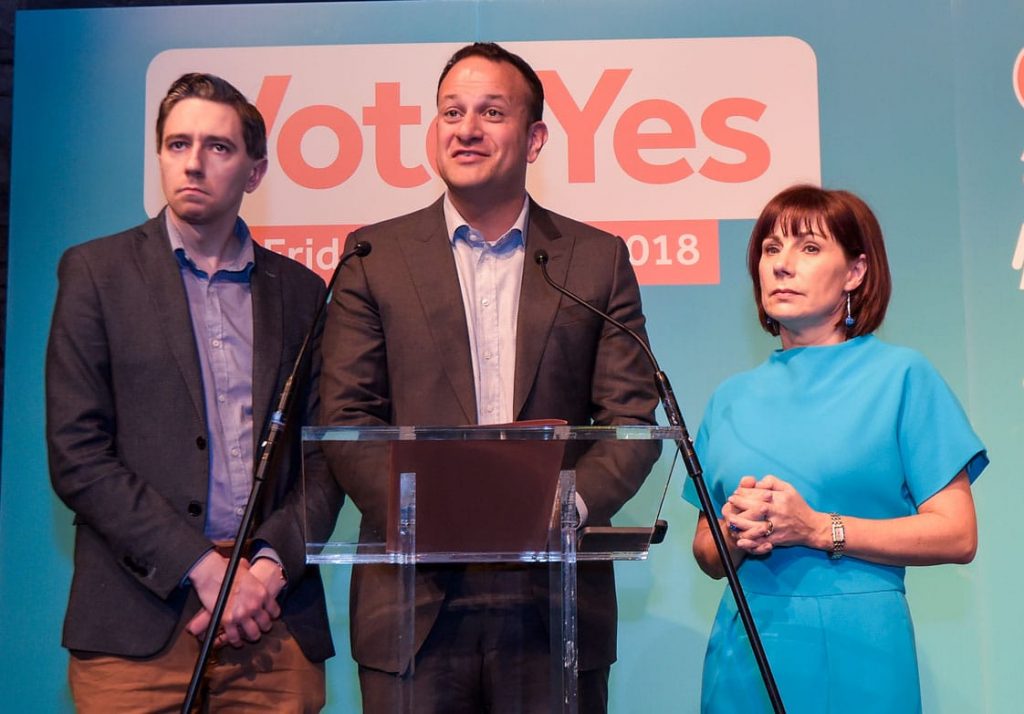Blog Post
How Irish voters were manipulated by the media to repeal the 8th Amendment
By Jonathon Van Maren
August 16, 2018 (LifeSiteNews) – It has been several months since Ireland voted to repeal the 8th Amendment, and many pro-lifers are still struggling to understand how, exactly, the result came about.
How did so many people who oppose abortion on demand vote to repeal protections for pre-born children? Why did so many people tell canvassers at the door that they were pro-life, but then vote “Yes”? What did the pro-life movement misjudge or misunderstand in the lead up to the vote, considering the landslide victory for the abortion activists?
As more data has come in and more information has become available, we are starting to get answers to those questions.
One of the reasons that the results were so shocking is that internal polling from both sides had given every indication that the results would be extremely tight, with the “Yes” or “No” side squeaking out a victory by perhaps only a couple of percentage points. Additionally, the general consensus of opinion polls was that only around a third of the Irish people actually considered themselves to be “pro-choice” insofar as supporting abortion on demand—and yet, 66% of those who cast their ballot voted to do away with the 8th Amendment and bring abortion on demand to Ireland. They did this despite clear and constant warnings from pro-life campaigners, who ensured that nearly every lamppost in Ireland was festooned with signs detailing what a “Yes” vote would mean, and canvassers were out every day and night across the country, talking to people and distributing information.
Life Institute, one of the many organizations that made up the Save the 8th Coalition, has now released a twelve-page report detailing precisely why the referendum was lost on May 25 despite the herculean and heroic efforts of thousands of pro-lifers, some of whom had been out canvassing for years. They have cited three key factors that contributed the result of the abortion referendum, which saw 33%–723,632 people—vote to maintain the right to life for pre-born children. Their analysis provides key insights into the stunning upset revealed by the exit polls late in the afternoon of May 25, and provides a far more nuanced picture than does the claims of abortion activists that Ireland is now a universally abortion-supporting country.
Firstly, Life Institute noted, “It was more a vote against the 8th Amendment than vote for abortion—because voters had been persuaded by the media claim, made repeatedly and persistently for the past five years, that the 8th was harming and even killing women.” This claim was repeated by abortion-supporting doctors on television who were willing to openly lie to the public about the impact of the 8thAmendment, as well as what treatment women could receive when pre-born children also received legal protection. Dr. Peter Boylan, the chairman of the Institute of Obstetricians and Gynaecologists, was particularly willing to make outrageously false claims, including the assertion that a woman named Sheila Hodges, who had succumbed to cancer prior to the 8th Amendment becoming law, had died because of the 8th.
But as Niamh Uí Bhriain, the co-founder of Youth Defence and a key spokesperson for the 8th Amendment told me in an interview, the case that seems to have persuaded many of the Irish people to vote for repeal despite the moral objections to abortion is the tragic 2012 case of Savita Halappanavar, a 31-year-old Indian dentist who died of a septic miscarriage. Abortion activists in the media, particularly at the Irish Times, leapt on the case and claimed that if Savita had received an abortion, she would have lived. Subsequent medical reports proved that this was not the case, and that abortion had nothing to do with it, but despite the attempts by pro-lifers prior to and throughout the campaign to correct the misconception, the narrative had been set—abortion activists put up signs with Savita’s face all over Ireland, and even sent someone to India to record a video of Savita’s parents endorsing repeal.
The ugly truth is that abortion activists used Savita’s tragic death to persuade the Irish people to bring feticide to the Emerald Isle. As Life Institute noted in their report, “The lie that Savita was killed by the 8th Amendment was repeated so often that it became deeply embedded in the public narrative, more deeply, perhaps, than we had realised. A shift had taken place in the mindset of middle Ireland. A search of the website of RTE (the nation’s largest news provider) for example, using the terms ‘Savita, abortion’ yields an astonishing 19,800 results since 2013.” On the other hand, if you search her name combined with the word sepsis, which is what actually killed her, you come up with only 114 results. Savita Halappanavar thus became the Jane Roe figure of Ireland’s abortion lobby: A woman that could be lied about in order to accomplish a political goal.
The second factor contributing to the victory of the “Yes” vote was that many of the Irish people were convinced that difficult health circumstances could only be addressed if abortion was an option. They were told that abortion was the only way to help women in many circumstances, “such as pregnancy after rape, or when the baby had a life-limiting condition, always referred to as a ‘fatal abnormality’ by the media.” Again, doctors like Peter Boylan were more than willing to make false claims about why abortion was necessary, ignoring the fact that Ireland had been declared one of the safest countries in the world to be a pregnant woman. Again, pro-lifers did their best on TV, in interviews, and through the distribution of tens of thousands of leaflets, to explain that abortion was never necessary to address a woman’s health concerns–but the overwhelming push by the media to repeat this point entrenched in the minds of many voters as they made their decision.
The third main factor leading to the repeal of the 8th Amendment was that there are simply now more pro-abortion people in Ireland. The number of people who think that abortion should be available for any reason, despite still being a minority, has grown, “boosted in part by anger at the [Catholic] Church but also other factors, and was expressed in a swing in favour of legalised abortion, particularly amongst younger voters and female voters.” Life Institute noted that at least 33% of voters “are aware of the humanity of the baby, but they believe that the same baby can be killed if that pre-born boy or girl gets in the way of any aspect of their lives, including occasions where the child is simply inconvenient.” This attitude was highlighted at Dublin Castle on the day of the referendum, where cheering, dancing crowds greeted the news that abortion was coming to Ireland.
Despite this heartbreaking loss—one pro-life activist described the impact of the news as a “wound to the soul”—Ireland’s pro-life movement is vast, dedicated, and well-equipped. It is easy to forget in the face of the tragedy of May 25 that over 30% of the Irish people voted to keep abortion entirely out of Ireland—and that many, many more are opposed to the government’s plans and will grow to regret their votes in the years to come. Pro-life activists are now regrouping and strategizing for the years ahead. They will fight for the life of every Irish baby, no matter what the cost.
READ THE REST OF THIS COLUMN AT LIFESITENEWS.COM









Ireland will regret what we have done. Bringing judgement on Our lovely country and our children will not thank us. So sad.